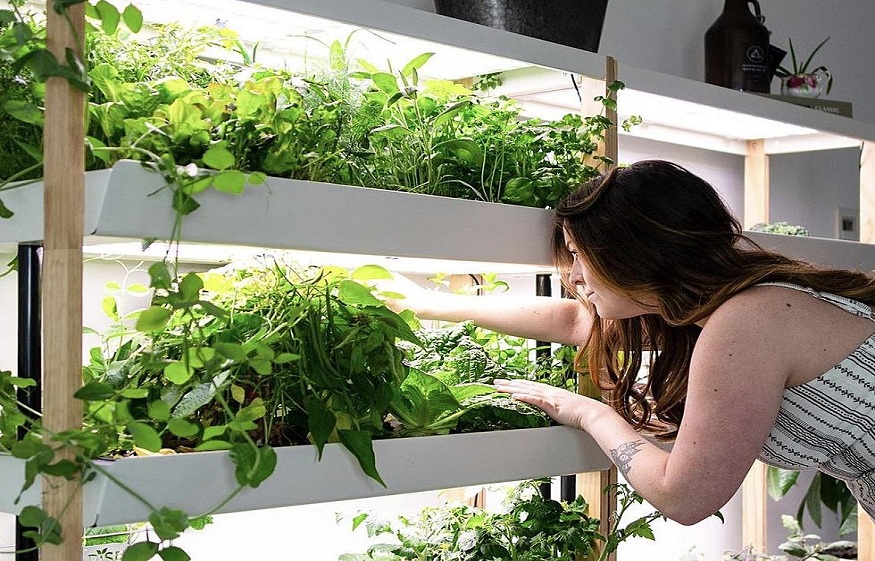Hydroponics System in India: An Overview

Hydroponics is a technology that is often overlooked, despite the fact that it has more advantages than regular farming. It is gradually gaining popularity in India, and a variety of business models based on it are emerging. With climate change, along with other contemporary world environmental challenges, becoming a top concern for the world, and the Indian government’s objective to drastically boost the incomes of our farmers, we are presented with yet another opportunity for a revolution. And this revolution could come in the shape of hydroponic farming, which could benefit not just agricultural areas but also city people who are grappling with the city’s relatively worsening environmental situation.
Hydroponics allows for urban farming by allowing plants to be grown on rooftops and even in bedrooms. Hydroponics roots are immersed in a tank of oxygenated nutrient solutions and are in direct contact with important minerals, allowing you to grow your plants closer together and save room in the more densely built city residences. These plants have the potential to provide a solution to the long-standing pollution problem in metropolitan areas, which is a by-product of development in many cases. This is not to argue that pollution, including pollution generated by development activities, should be encouraged, but rather that growth should occur in lockstep with the environment.
Hydroponics saves water consumption by up to 90%, requires 80 to 95 percent less area, and allows fruits and vegetables to be grown all year. It provides enough produce in a sustainable basis while also freeing up enormous swaths of land to be returned to their original form, repairing the ecology. Simultaneously time, it proposes a new approach to water conservation.
Several entrepreneurs in India are adopting the strategy to produce organic food, despite the obvious scarcity of land and the high cost of purchasing a huge plot of land for a business. These are enterprises that assist city dwellers in creating urban gardens in constrained places. With the growth of hydroponics system in India, more startups are likely to emerge. In India, as well as the rest of the world, urban farming will gain traction. What is required is for rural, or primary agriculture, to adopt this strategy, which does not necessitate high-tech or otherwise significant financial investment but gives both environmental and economic benefits. The country that has been supporting the globe, not just in terms of exports but also in terms of the fact that India produces 1/6th of the world’s food, should embrace this invention for the benefit of the entire world.
According to research, the domestic market for hydroponics has grown by 50% since the lockdown. Experts believe that hydroponics, as opposed to traditional farming, could provide some solutions to India’s food security issue.
Subsidies for capital costs paid by hydroponic growers are available from both the federal and state governments. The percentage of subsidies varies from state to state, ranging from 20 to 60 percent. The National Horticulture Board’s hi-tech horticulture programme offers credit-linked help to hydroponic producers. Government perks and tax credits are nevertheless a source of ambiguity. It’s still unclear if hydroponic output is subject to GST and whether the rules consider it as agricultural income. The government’s clear guidelines can aid in the expansion of hydroponics in India.





